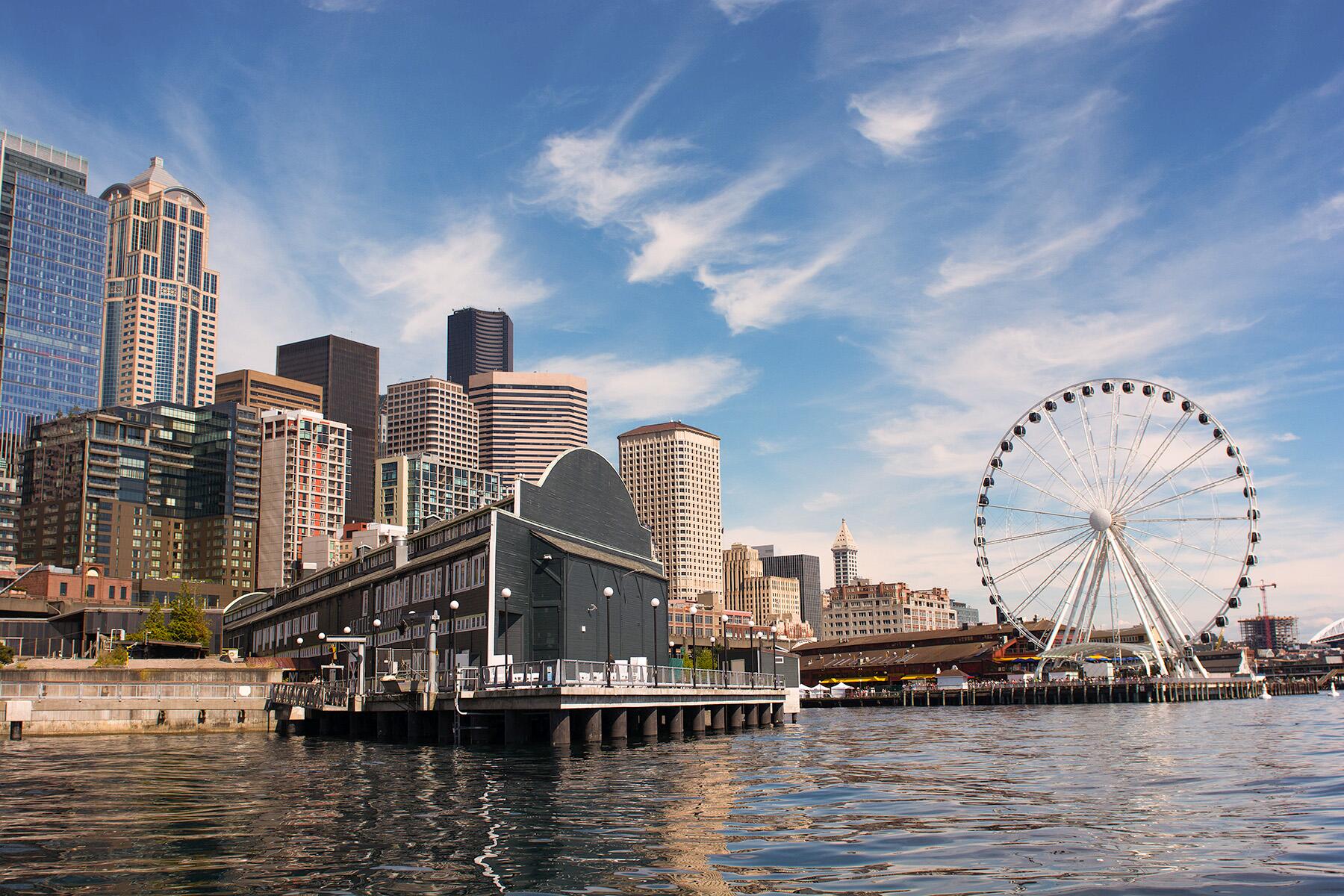Since 2010, visitors to Ireland's most famous outdoors have increased 10 fold to 2 million annually, according to local officials. Situated on the edge of the country's scenic west coast, the iconic 700-foot tall cliffs draw as many “oohs” and “ahs” as they do crowds. Here's what you need to understand before visiting the country’s top attraction.
If you’re considering a trip to Ireland, chances are you’ve heard of The Cliffs Of Moher. Even if you aren’t planning a visit, you may have inadvertently seen the cliffs as a dramatic backdrop in The Princess Bride, Harry Potter and the Half-Blood Prince, or countless computer wallpapers and unlabeled travel photos—they’re that picturesque.
Either way, here’s what you need to know before visiting these famous cliffs (that everyone has seen).
Are They Really Worth It?
Yes. The Cliffs of Moher are about as dreamy as you can imagine when it comes to witnessing seaside rocks, massive waves, and the everlasting collision of land and ocean. They’re up there with parts of Hawaii’s and California’s famous rocky coastlines but internationally distinguish themselves with their staggered formation, ninety-degree drops, graphite gray “cake” topped with green “icing,” and the eerie lack of nearby trees.
How Do I Get There?
If you are planning to spend much of your time in the West of Ireland (which we highly recommend), you should forgo Dublin airport and fly into Shannon Airport in County Clare. The airport experience is much more pleasant than busy Dublin Airport and the Cliffs are just under an hour from the airport. As an added bonus, Medieval Bunratty Castle and village is just a few minutes from the airport.
Recommended Fodor’s Video
Why Are These Cliffs Such a Big Deal?
Good question. The short answer is the cliffs are both spectacular and popular, which keeps people coming back. The long answer is up for debate.
You see, local tourists have been visiting Moher since the 1800s, from which there are postcards. For reasons unknown, tourism spiked in the 1990s, then went mainstream in 2007 with the completion of the impressive hillside visitor’s center. In 2015, the United Nations designated the area a “world heritage site.”
Today, the proverbial floodgates have been opened—more than 2 million people visit the cliffs each year, making it Ireland’s top attraction. Whether it’s the ninety degree cliffs that rise 700 feet above the ocean, the 11 miles of seaside paths that teeter on the daunting edge, or the feeling of finding yourself at the end of the world, it’s easy to see why some travel media call this the “best cliff view” on Earth.
How Can I Get Tickets?
Either online, in-person, or through a guided tour. If you book online at least one day in advance, tickets are half off at €4 per adult (around $5). Not only does this option save you money, but it also saves a little time on arrival. Tickets in person cost €8 per adult and can be purchased from either the parking lot attendant or visitor’s center. Children under 16 are always free. All options include parking. Guided tour prices vary, but almost always include entrance tickets and start around $50 from Dublin.
Where Can I Get the Best Photo?
Depends. If you want a long, sloping view of the many cliffs, hike to the northernmost viewpoint (i.e. two cliffs above O’Brien’s Tower) and aim your camera southward towards Hag’s Head, the southernmost point. For a better angle of the cliffs’ height, walk south to Moher Tower from Hag’s Head and point your lens northward. For the best selfie with both sea stacks in the frame, hike about halfway between Moher Tower and the visitor’s center and shoot northward with the cliffs to your right.
How Crowded Is It?
Very. More than 2 million visitors come every year, according to the latest tourism figures. During peak summer months, there are gobs of tourists, especially between the hours of 11 am–4 pm, the time in which the greatest number of coach bus tours arrive and operate. That said, there’s plenty of room to wander and a lot more elbow room to enjoy the further south or north that you hike from the main viewing area.
When's the Best Time to Visit?
Spring—it has fewer crowds than summer and less rainfall than autumn. Fall is a good second option, however, as it too enjoys noticeably lighter crowds than summer but slightly more precipitation than spring. Winter is the wettest season and should largely be avoided. Summer is sunnier, but the masses might detract from an otherwise serene experience. Whatever season you choose, visit after 4 pm (or before 11 am) for ideal crowd and lighting conditions. As this is Ireland, your visit is always subject to rain, sea fog, and strong winds.
What's the Best Thing to Do When I Get There?
Walk, watch, and listen. Walk to Moher Tower, the southernmost point, then past O’Brien’s Tower en route to the northernmost point. If you’re scared of heights, stick to the official walled path. For better views, stick to the unofficial seaside trail, which is legally allowed and runs within a few feet of the stunning edge. Watch the ocean and islands in the distance. See visitors in the distance appear as tiny fleas atop of the cliffs. Listen to the waves and wind and birds. In moments when no one else is around, enjoy the silence. This place is special.
INSIDER TIPIf the weather is good, pack your own lunch, as there are countless spots—both daring and safe—from which to enjoy your own private picnic while taking in the timeless vistas.
Do I Need a Guide?
No—getting to, entering, and enjoying the cliffs are easily done on your own, especially with the free audio guide for iOS and Android phones. Driving the winding roads by rental car is also a fun-filled learning experience, especially since opposing drivers are respectful, slow-going, and courteous. That said, guided bus tours are available for those interested and guided multi-day adventure tours of the surrounding region come highly recommended.
How Much Time Should I Spend There?
If you want to walk the full 11 miles (recommended) and take photos of the cliffs from both the longer-looking northside and taller-looking southside, plan on four hours. If that doesn’t interest you, I’d budget at least two hours.
INSIDER TIPSome coach tours only stay 90 minutes, which isn’t quite enough, so be sure to look for one that stays at least two hours if that option appeals to you.
How Was the Landscape Formed and Why Aren't There Any Trees?
After significant geological activity, Ireland assumed its present position about 25 million years ago. From then on, a long period of erosion resulted in considerable limestone, sandstone, and shale deposits, which make up the modern layers of Moher. After millennia of deforestation and animal grazing, the surrounding area became largely devoid of trees, which when coupled with green pastures, creates an almost haunting, if not incomparable landscape. Which probably explains why the Irish translation means “cliffs of ruin.”
Are the Cliffs Wheelchair Accessible?
The visitor’s center and main viewing area fully accessible. The wheelchair ramp to O’Brien’s Tower is also accessible but steep. Beyond that, getting to the extreme southern and northern viewpoints are mostly done via unpaved, uneven, and often washed out pathways, which make them largely inaccessible. That said, the main viewing area and O’Brien’s Tower both offer astounding views that are still worth your time.
Where's a Good Place to Eat?
I’m glad you asked. If you didn’t know already, Irish food is unexpectedly delicious. For traditional Irish stew, bacon and cabbage, seafood chowder, and/or soda bread, head to either Egan’s Pub in nearby Liscannor (southside cliffs), or O’Connor’s Pub in Doolin (northside cliffs). Although there is a cafe at the visitor center, you’ll find better food at one of the above and better views by packing your own lunch.
What Other Things Should I Do Nearby?
In the immediate vicinity, hike Burren National Park, a lunar-like landscape of which The Cliffs of Moher are a part. Also see Poulnabrone Dolmen, a 4,000-year-old neolithic tomb.
If interested in arguably better natural wonders of the South Carolina-sized island, consider spending a few days in neighboring County Kerry. It’s the most popular county for a reason. Here you can drive the majority of the Wild Atlantic Way, bike the Gap of Dunloe along the Ring of Kerry, hike or kayak Killarney National Park amid castles, lakes, and paved trails, walk the Derrynane Mass Path to Slea Head from Dingle, see why the most recent Stars Wars was filmed at the Skellig Islands, and discover unexpected thrills by “coasteering” in the North Atlantic (with wetsuit of course).
The well-rated and super-friendly Ireland Walk Hike Bike are charming ambassadors for the Irish outdoors and can help facilitate much of the above, in addition to a signature visit to the Cliffs of Moher.
Where Should I Spend the Night?
Just a 15-minute drive from the visitor’s center, Wild Honey Inn is couple-owned and award-winning boutique hotel, restaurant, and pub—not to mention one of the coziest retreats you’ll ever encounter.
Consider lingering in this area for a day or two before leaving. The nearby villages of Liscannor, Lahinch, Fanore, and Doolin all have great Airbnb options. If you’re headed to Clare’s southern neighbor, County Kerry, The Lake Hotel is about as idyllic as it gets.




